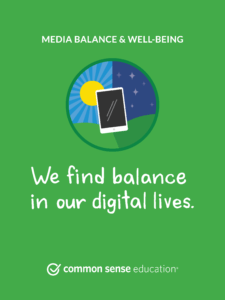
So Now What? webinar: How to balance tech usage in a world of digital learning
By Melissa Rayworth
It’s never been simple to manage the digital lives of our kids. Before this challenging year, though, the general goal was pretty clear: Decide what you feel is a reasonable amount of daily screen time. Find the best ways to enforce those limits, and look out for safety concerns along the way.
But in 2020, as with so many things, that familiar path has suddenly become a whole lot murkier.
Kids’ entire lives are happening online: It’s where school happens, where they “see” friends and where they seek entertainment. Parents may be wondering where and how to set limits during this unprecedented situation, and they may worry about the safety risks that crop up when even kindergarteners are expected to be online throughout the day.

On Sept. 23, Ehehalt led an online seminar for parents as part of the ongoing “So Now What? Helping Parents & Caregivers Navigate a School Year Like No Other” series, part of the Tomorrow campaign.
During this half-hour session, she explored some of the challenges families are facing and offered a few key tips — along with plenty of reassurance — for parents of kids ranging from kindergarten to high school age. Her advice included these basic steps:
- As the school year begins, choose a consistent and comfortable workspace for your child’s online learning. Then work with them to develop a routine. For help with routines (especially with younger kids), she offered templates and tools from Common Sense, including the Digital Learning Pledge (for K-5) and the Digital Learning Agreement (for grades 6-12). Both are available in English and Spanish and can be customized as needed.
- Once the school year is underway, parents shouldn’t feel pressured to be involved in every step. But Ehehalt recommends that parents check-in with their kids each day in a way that goes beyond simply asking “How was your day?” She offered another Common Sense resource great for use with younger kids: the Learning Conversation template.
- Throughout your child’s schooldays, plan for some breaks to let your child step away from their digital device. Wide Open School is a digital resource that offers plenty of non-screen activity suggestions. Free and no log-ins or subscription sign-ups needed.
Ehahalt then explored the subject of balancing all kinds of screen use, sharing this advice:
- To cover all aspects of handling devices, staying safe and consciously balancing screen use with “real world” living, she recommends checking out Common Sense’s Family Media Agreement.
- To help parents decide how much screen use to allow, Ehahalt offered this: “It’s not about the quantity. It’s about the quality.” Children of all ages are now using screens in a wide range of ways. Digital communication may be their primary method of interacting with friends, collaborating with classmates and finding entertainment that raises their spirits. As long as what they’re doing isn’t worrisome, it’s OK (and perhaps even unavoidable) to be allowing much more online time that before.
- It is valuable to monitor your kids’ online interactions for online bullying, “digital drama” and even hate speech. If your child or their friends are being bullied, Ehehalt says, empower them with productive steps that can improve the situation. She mentioned letting them know they can step away from online conversations when they need to, rather than responding or retaliating. And they can get trusted adults involved who will help. Along the way, check-in regularly to make sure online social drama isn’t affecting their emotional wellbeing.
These days, heavily limiting screen use is no longer an option. As COVID-19 continues to disrupt daily life, limiting online interaction means limiting social connections for school-age kids.
“We know right now the only way that they’re socializing with their friends, in most cases, is through online social chats,” Ehehalt told the audience. “It’s important for them to feel like they’re part of the community and a part of their friend groups. So with all of this connection, we just want to make sure we have a good handle on our child’s mental health.”
Most of all, Ehehalt said, be patient with your kids — and yourself. “Balance sort of has a new definition now,” she said. “You all, as caretakers, have to give yourself grace.”
For more details on all of this, watch the video recording of this “So Now What?” seminar right here.
And register here for the final “So Now What?” seminar, happening Wednesday, Sept. 30.